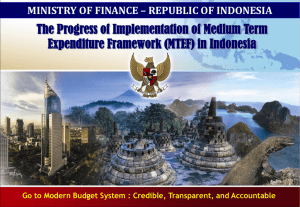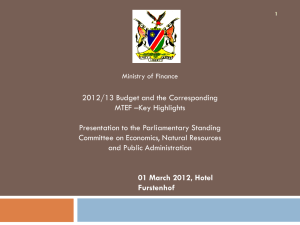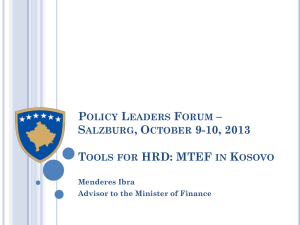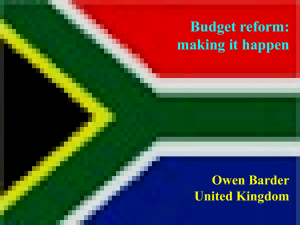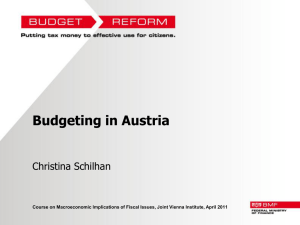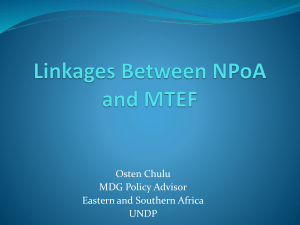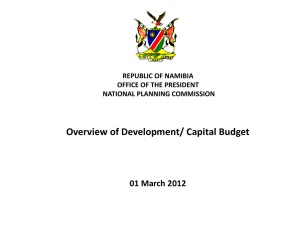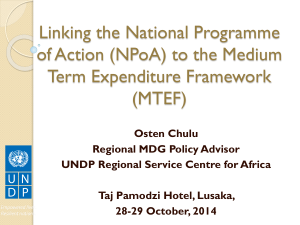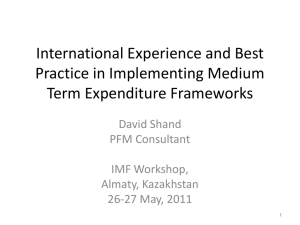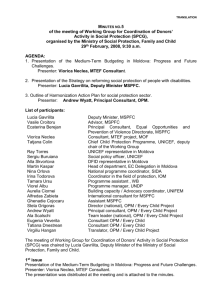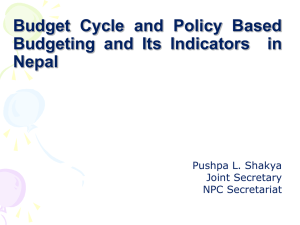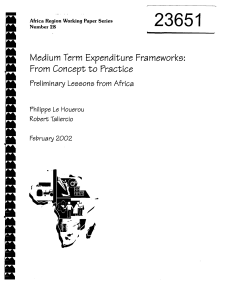bhutan - workshop on pem
advertisement
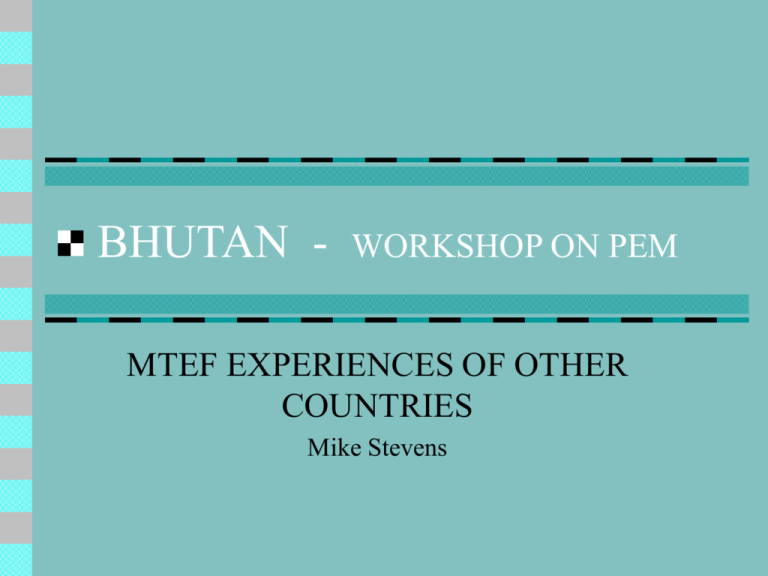
BHUTAN - WORKSHOP ON PEM MTEF EXPERIENCES OF OTHER COUNTRIES Mike Stevens Introduction MTEFs frequently recommended by Bank But the record is spotty MTEF unit busy developing new processes, but annual budget still made the traditional way Political leadership has little understanding of MTEF and what it means to spending choices Launched with fanfare, MTEF soon crashes Closer inspection reveals it never changed budget behaviour Some Questions to Ask Thus PEM specialists in Bank are stepping back and asking - what have we learned from nearly a decade of MTEFs? What has happened in countries attempting a MTEF? Has the MTEF gained traction on annual budget-making? Did we get the technical design recommendations right? What were the other PEM reforms the country needed to pursue? Was the sequence of reform right? Did the finance ministry have the technical capacity to lead PEM reform? Did policy-makers understand the ambit of reforms and back them? Some emerging answers Unquestionably MTEFs are a desirable component of budget reform. All major OECD countries make annual budgets within a MT framework, with good reasons: Every major OECD country has a medium term fiscal strategy Correcting 3 decades of incremental budgeting resulting in unsustainable taxation levels and deficits Demographic change and inter-generational effects (LT framework) Changing the incentives of departmental budget making, shifting from adversarial conflict to emphasis on performance Developing country arguments for MTEFs Poorer countries have just as many reasons for making annual budgets in a medium term framework Classic argument – to capture incremental recurrent costs of investment projects Fitting PRSP policies and programs into budget – pro=poor spending typically has high cost drivers Implementing Civil Service Reform – managing wage bill change Changing role of government implies portfolio spending shifts Planning implementation of big ticket policies: funded pension schemes, reducing arrears, rescheduling and reducing debt Managing revenue volatility (eg: mineral revenue dependent) Improving budget predictability, escaping cash release budgeting Three African Examples South Africa: Well functioning MTEF on second try, driven by need to control deficit, reduce debt, reallocate spending across and within ministerial portfolios, and change the culture of budgeting from incrementalism to performance, strong National Treasury Ghana: Uganda: Ambitious MTEF, integrating current and capital budgets, new budget classification system, accounting changes, performance indicators, MTEF run by separate PIU Less sophisticated but more durable, retained dual budget, delayed performance indicators, lengthened budget calendar, highly participatory, strong MF Three critical questions Does MTEF fit into sequence of PEM reform? Is the design of the MTEF right? Is the finance ministry strong and competent and the political leadership on board? What is the Sequencing of PEM reform? What is it that the government is trying to fix with budget reform? Some contenders: Off-budget spending Revenue not remitted to Treasury Aid funds outside budget Budget classification does not permit function and economic analysis Dysfunctional accounting system Weak fiscal reporting Low development value PIP Is the design of the MTEF right? Tendency in many countries to overspecify the MTEF – a particular risk with consultants Not starting with a MTFF Believing that you can launch a MTEF in selected sectors Moving too quickly to integrating RB & DB in program structure Prematurely incorporating performance information Giving departments too much flexibility too quickly to determine sector budgets within overall envelopes Moving to concepts of “headroom” before accounting system generates reliable costs Is political leadership on board? Does the political leadership understand the new rules of the game? How strong is the finance ministry? Is there a clear overall strategy for PEM reform, and how well does the MTEF fit into this strategy? Is there institutional capacity in MF and line ministries to operate a MTEF? Capacity to project revenues and spending over MT and develop fiscal strategy Capacity within sector ministries to move beyond incremental budgeting Capacity of MF to play a challenge role Conclusions Three key questions to ask before embarking on a MTEF How does the MTEF fit with other PEM reforms and their sequencing? (If not, more dialogue on budget reform priorities may be needed). What is the budget problem that needs fixing? Is the MTEF design appropriate? (Keep it simple: MTFF and topdown portfolio envelopes, maintaining MF scrutiny) Is the finance ministry politically and technically strong?(If not, risk is that MTEF and most other PEM reforms will founder).
